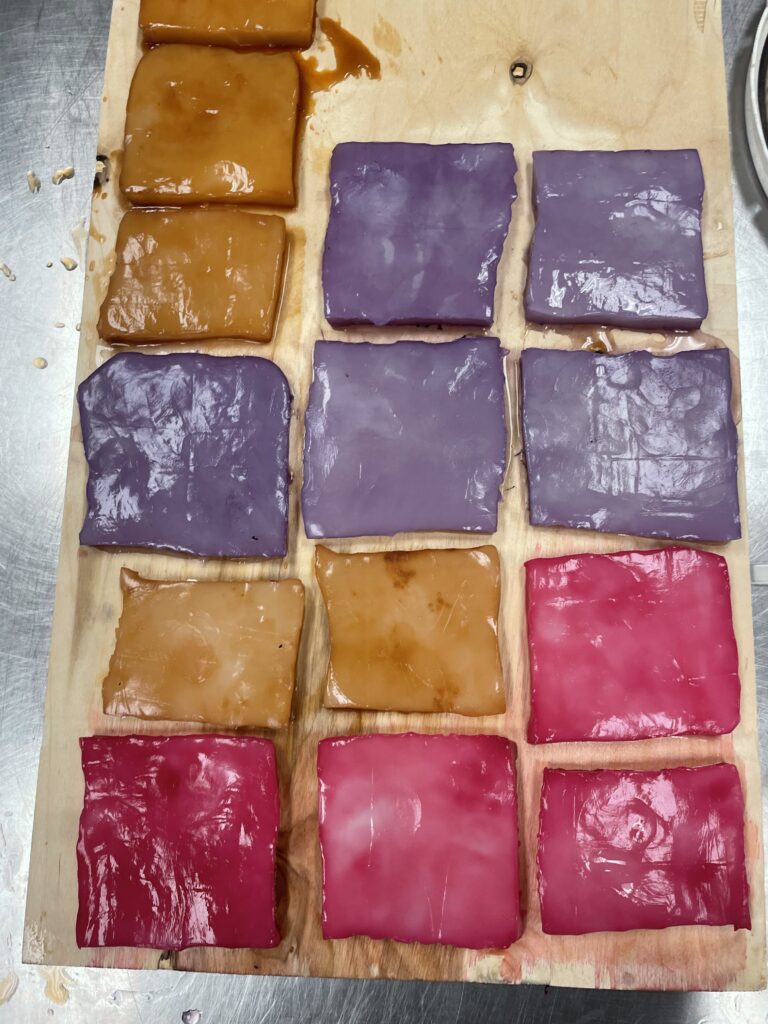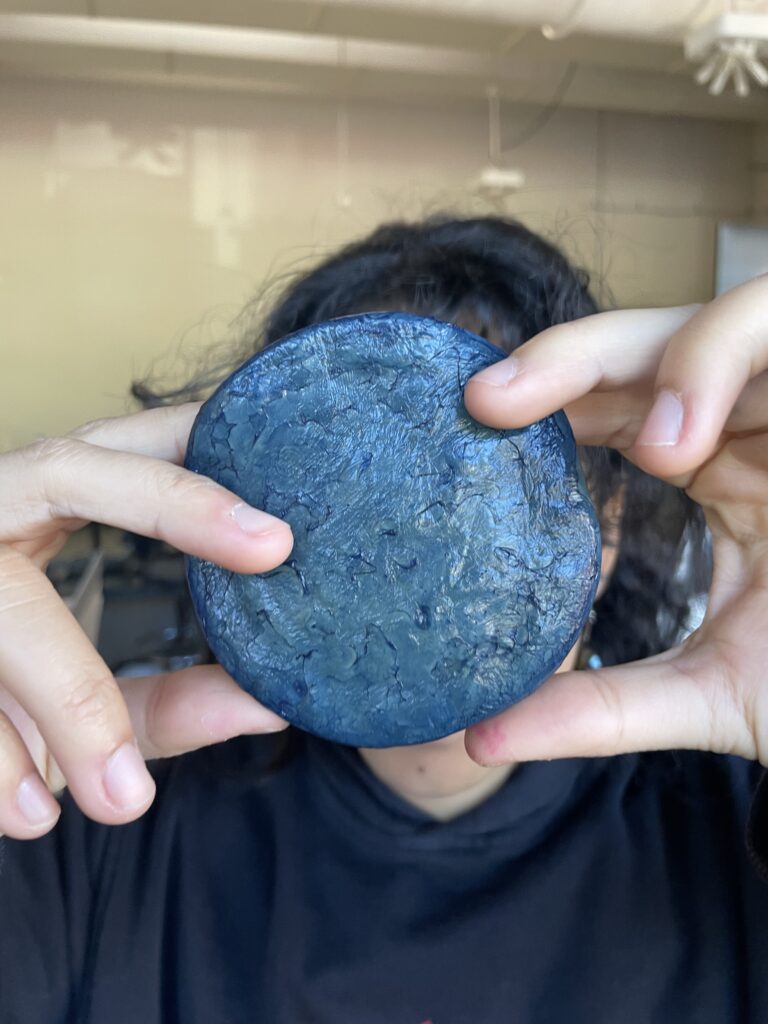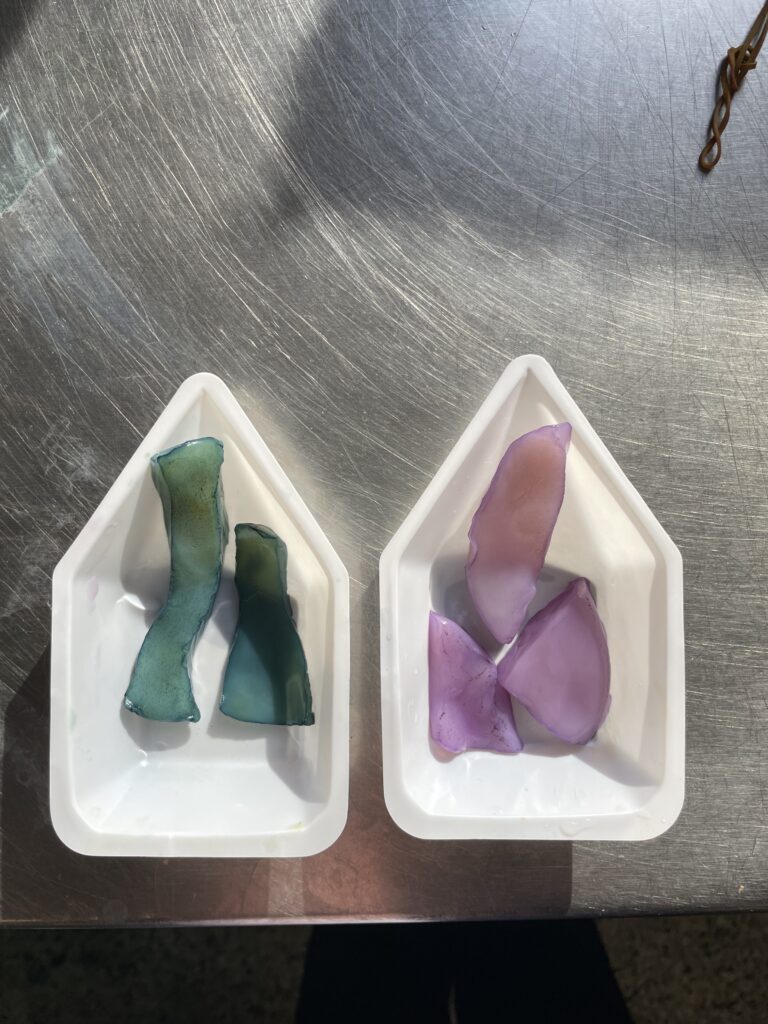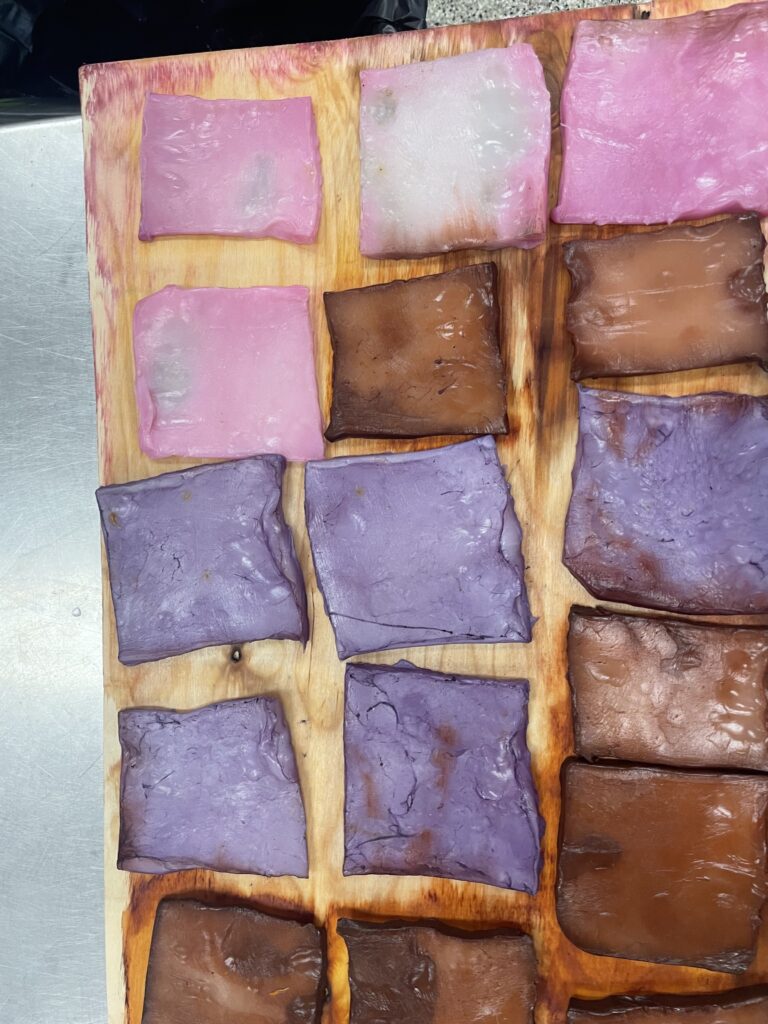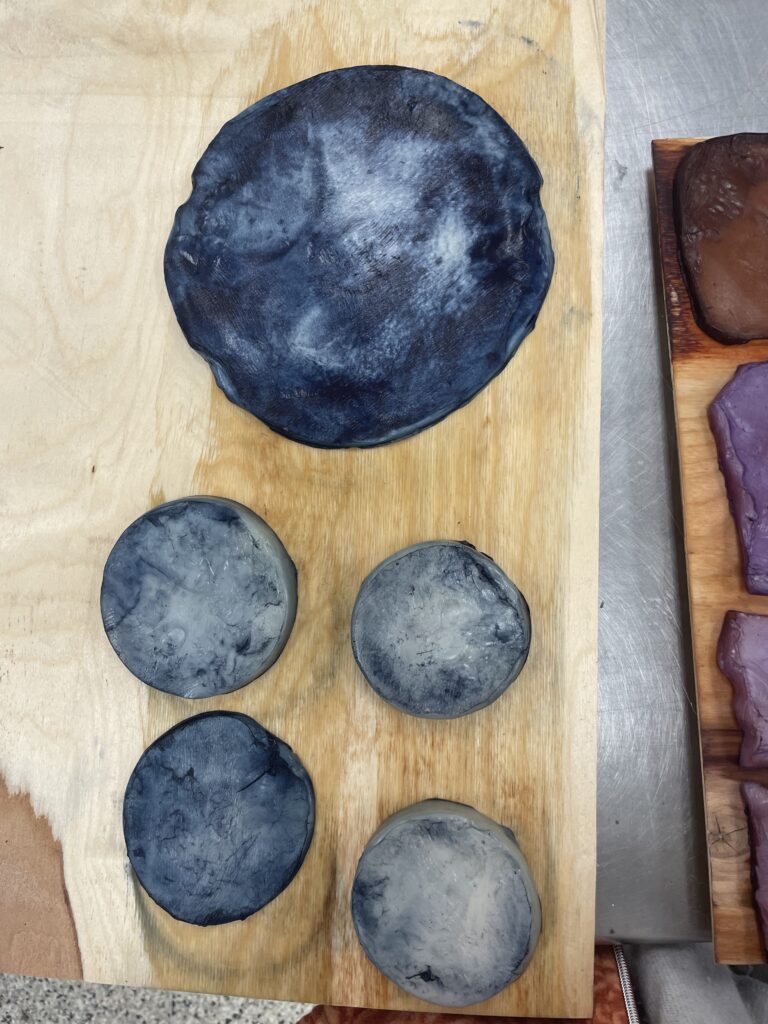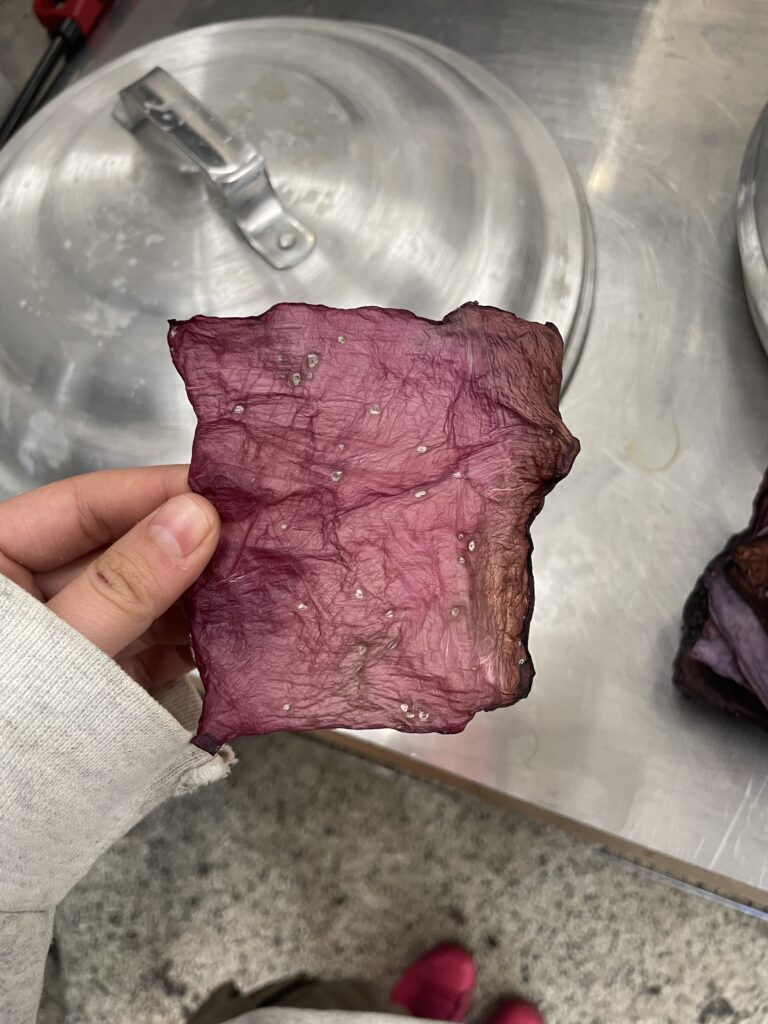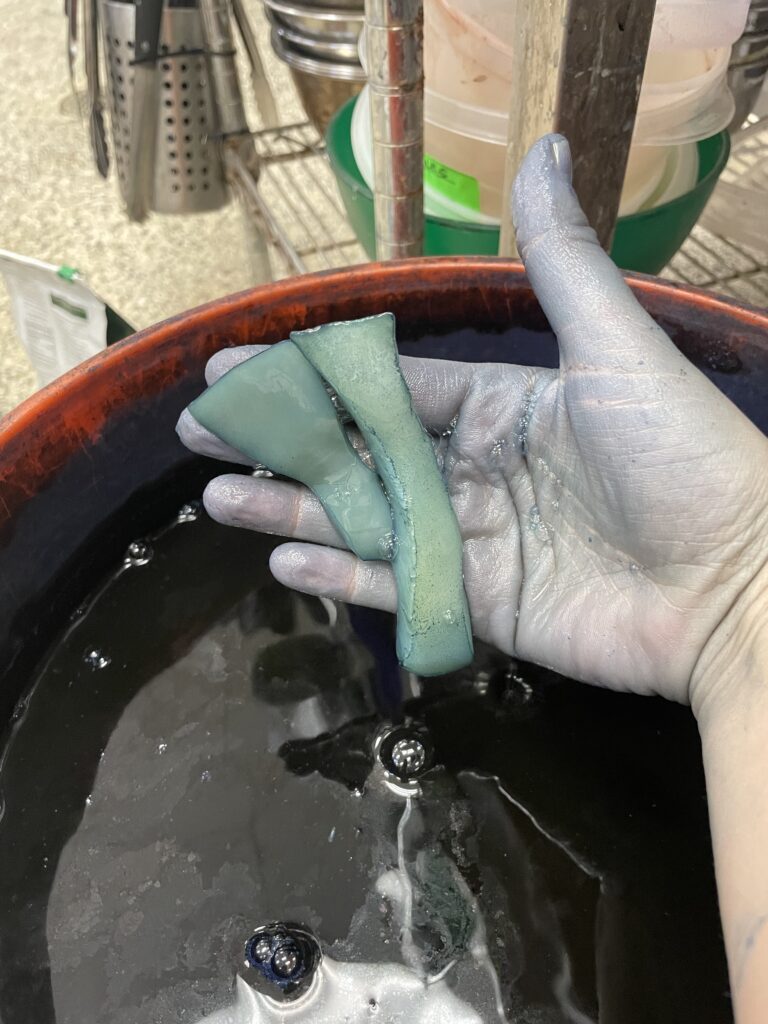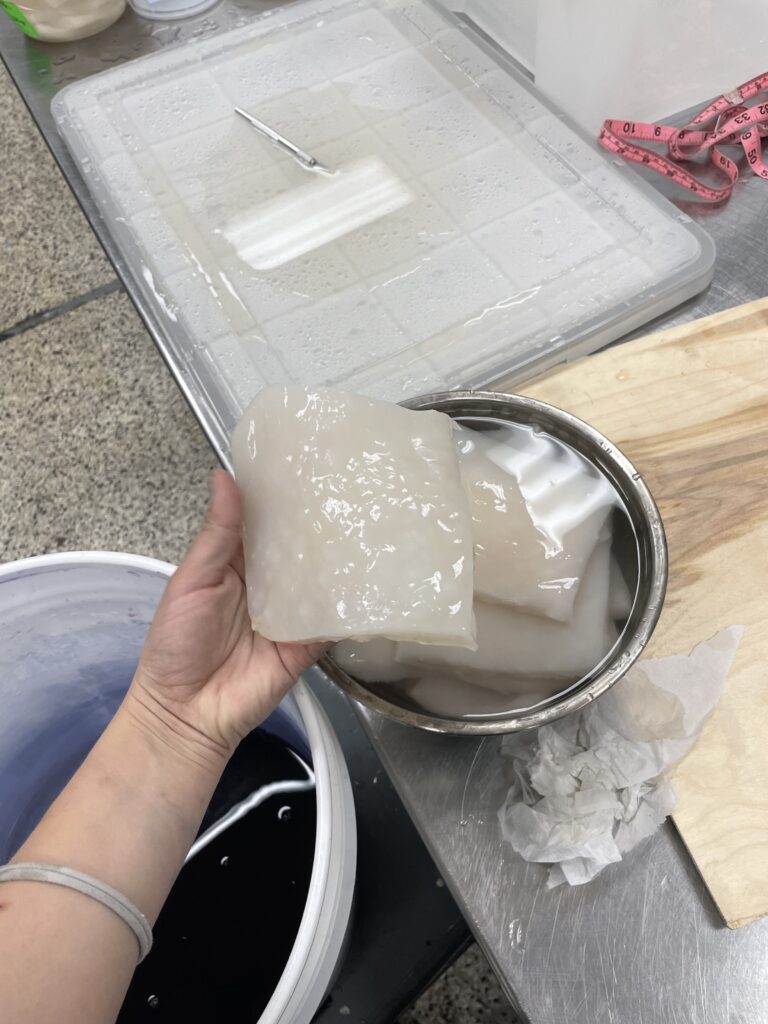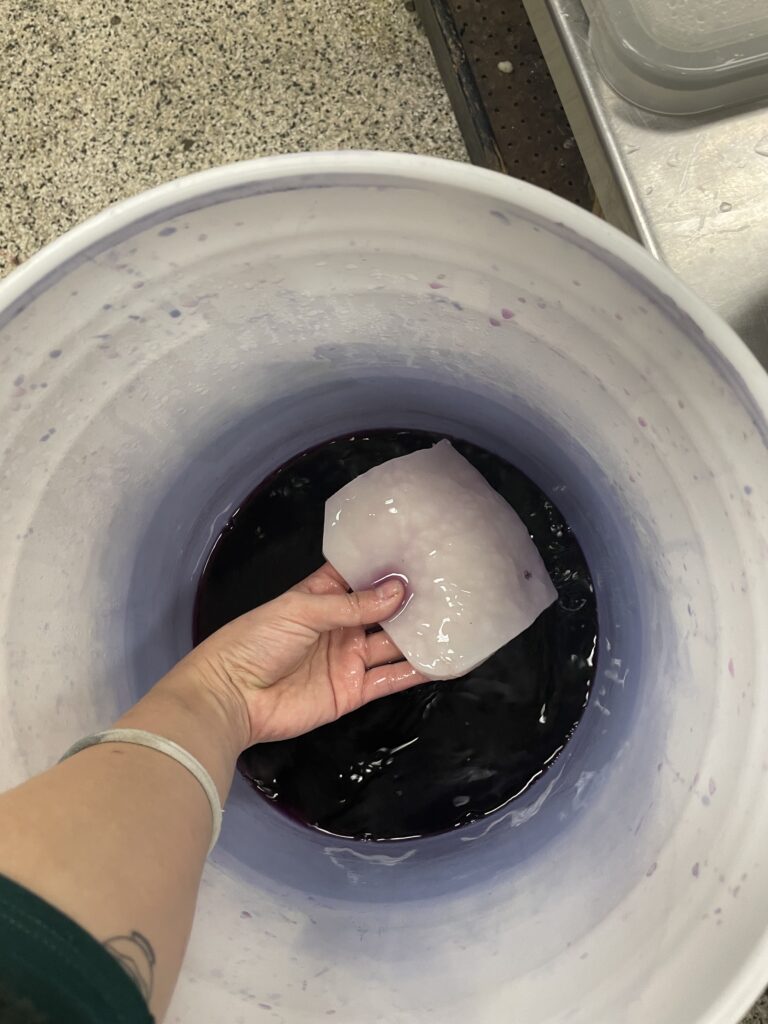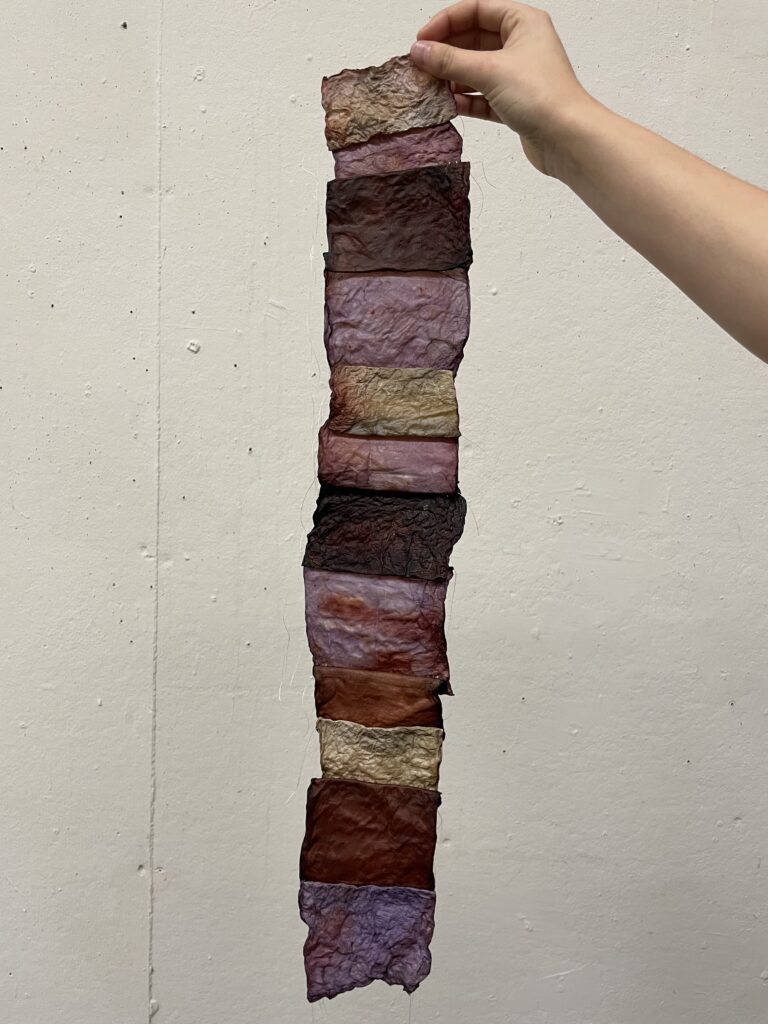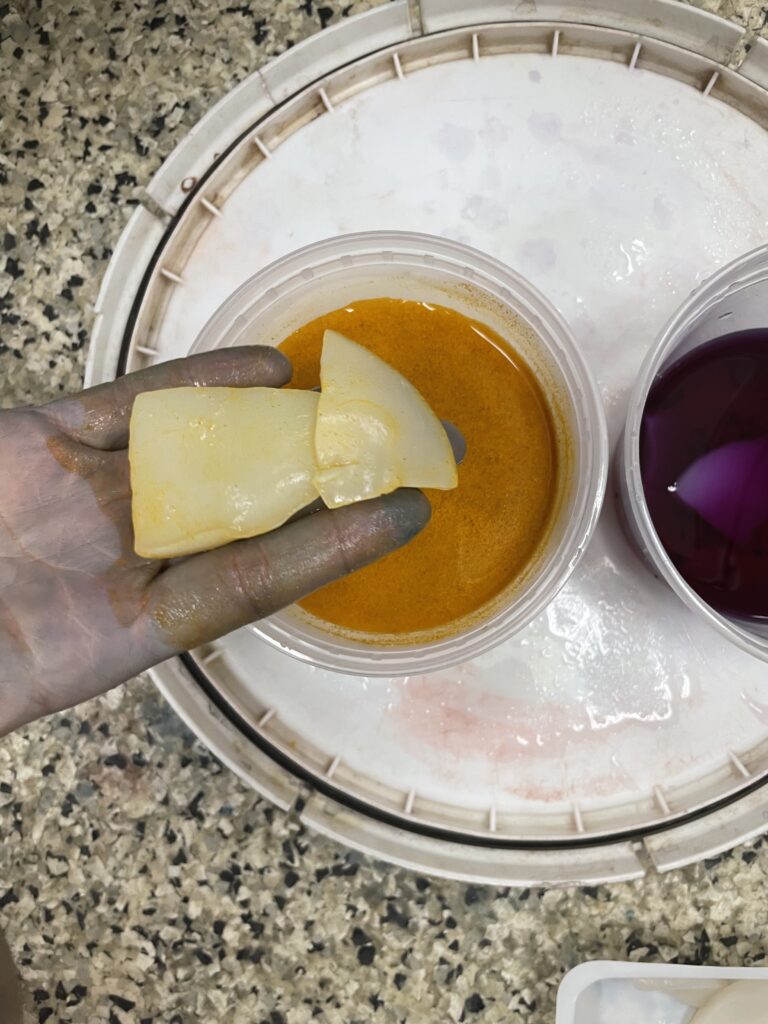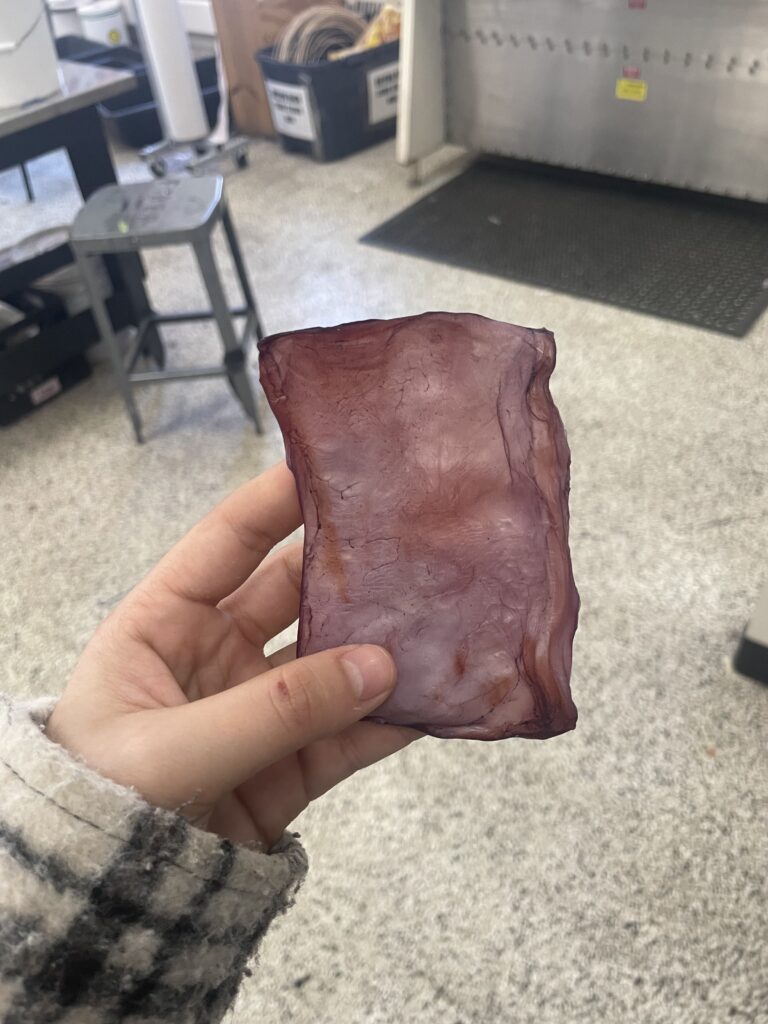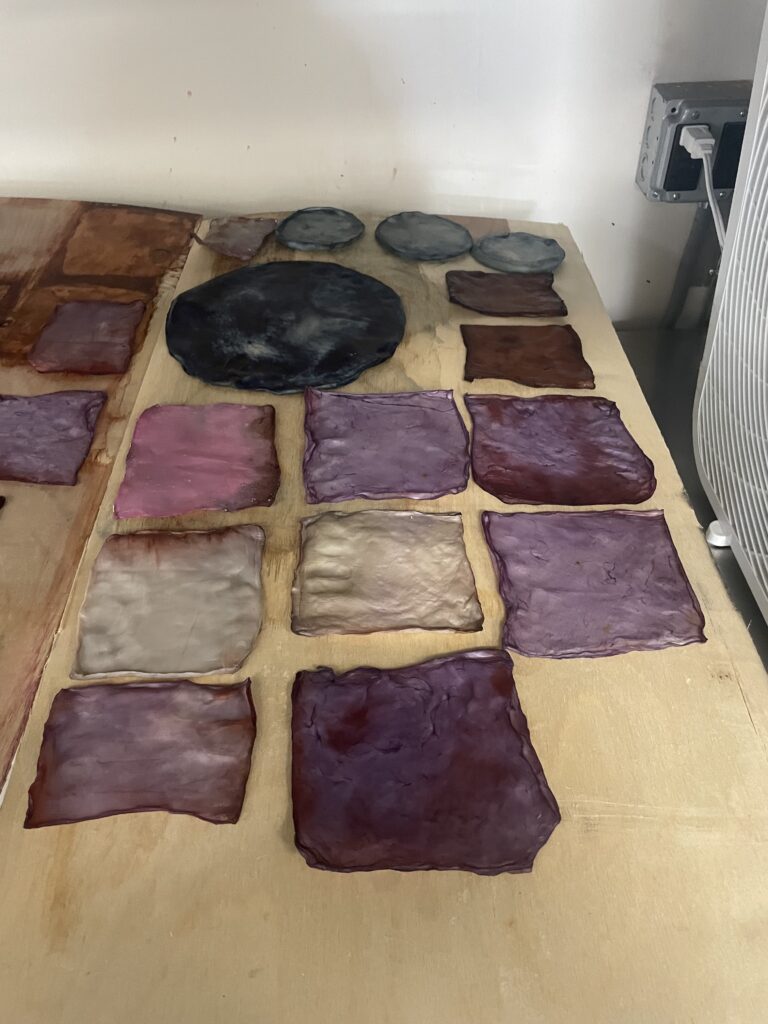
Maia Malakoff & Katherine Luna
Senior Fiber Majors
Project Overview
A collaborative basket made out of pieced bacterial cellulose, naturally dyed with indigo, logwood, pokeberry, and cutch: a basket to hold the remnants of a lifecycle, to become a placeholder for time, to honor the gathering of information, to pay respect to process, to give back to the the soil we came from.

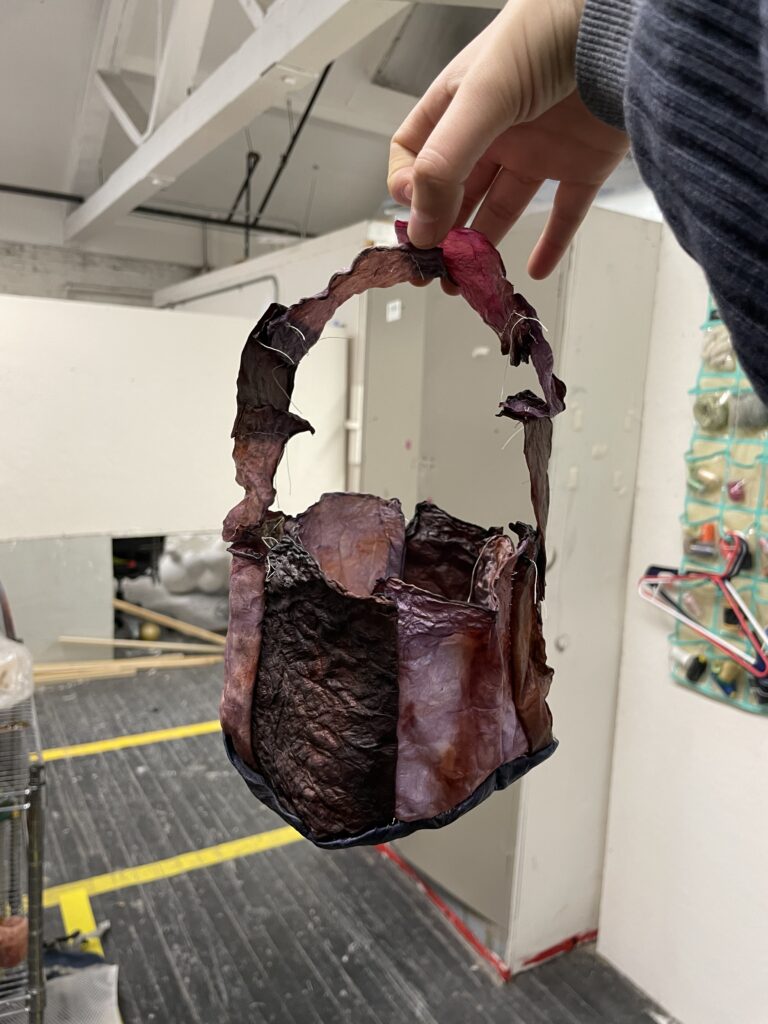
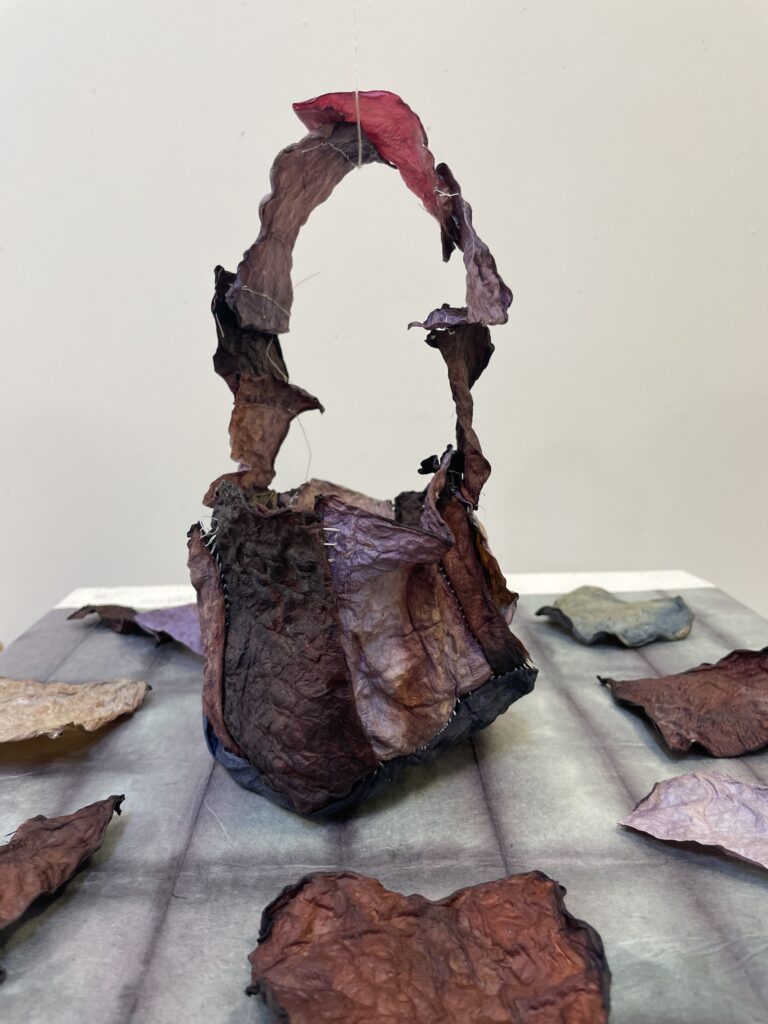

Process
We have been experimenting with various bio fabrication processes, spending several months of the spring focusing on bio plastic and bio yarn. With all of these recipes, we have always prioritized color, and the way that we can use natural dyes to color these materials.
For the bacterial cellulose project, we wanted to see how we could dye the cellulose with natural dyes.
We made several tests on two different thickness of cellulose. We dyed all of these samples while they were still wet, so that the dye could fully penetrate through the cellulose. Our first initial tests were with indigo and logwood, which proved to be super strong and colorful after soaking in a dye bath for around an hour. We also tested a cutch and turmeric sample. The cutch sample picked up lots of color, but the turmeric one seemed to wash out after a single rinse of the cellulose. We noticed that the thinner samples dried into a more paper like material, which was quite fragile. The thicker samples dried a bit more leather and fabric like, which we found to be more desirable.
Once our final bacterial cellulose had grown, we designed and planned to make a pieced and quilted basket that would hold our samples and research. We cut the basket pieces out of the large piece of cellulose, making them 4×4 inches. The cellulose was around an inch and half thick, and had quite a bit of drying to do. For the final basket, we used indigo, logwood, cutch, and pokeberry as the natural dyes. We dyed all of these final pieces for around an hour for each bath. Our indigo vat was not super strong by the time we were dyeing the final pieces, and so those samples were left overnight, or around 12 hours.
We should have tested a sample of the pokeberry dye, because we noticed that it began to grow little bits of mold as it was drying, and also lost the most color overtime. It had started as a very bright pink/red and faded to a very light pink by the end of the drying process.
The basket pieces took about 5 days to dry fully, and we needed to also put a fan that was blasting cold air to speed it up on the last day.
To construct the basket, we had began by hand sewing, but realized the fragility of the pieces and decided to use a simple basting stitch on the sewing machine to piece together all of the squares. The squares had shrunk significantly in size both in thickness and in width and length. We sewing the squares together, then sewed that piece to the round base of the basket. We also sewing a handle to hold up the basket. We placed all of our samples and research into the basket.
While creating this basket, we were thinking conceptually about creating an object that could hold onto both the physicality and the memory and meaning of our research, of our commitment to materiality.
Natural dyes that we tested: indigo, logwood, cutch, pokeberry, turmeric
